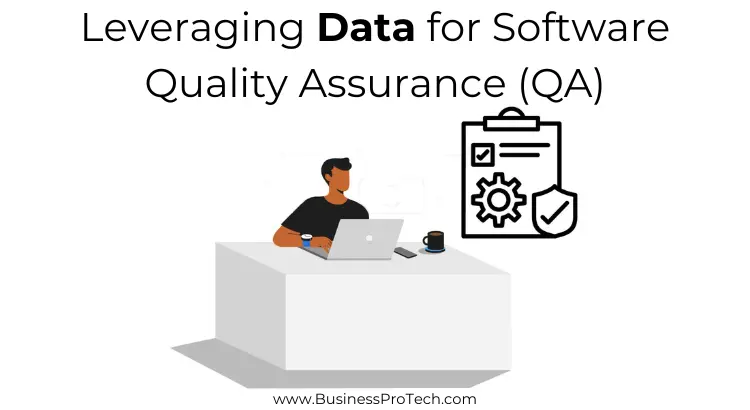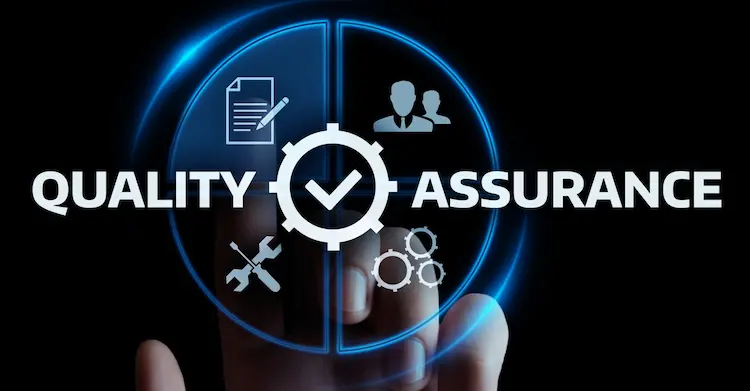Embarking on the software quality assurance (QA) journey is akin to setting sail in the vast ocean of data. Each wave of information offers the potential to navigate towards excellence, enhancing the robustness and reliability of software applications.
This odyssey, while daunting, is rich with opportunities to harness data creatively and effectively. As we chart this voyage, we invite you to explore the pivotal role of data in transforming QA from a mere checklist to a strategic cornerstone of software development.

Feedback Loops and Continuous Improvement
The quest for perfection in software development is perpetual. Data fosters a culture of continuous improvement through feedback loops, where user interactions and system performance feed into enhancements.
This cyclic process, enlightened by data, ensures that software quality is not static but evolves with each iteration. Discover how integrating feedback loops into the QA process propels software towards unparalleled quality.
In pursuing excellence, understanding how data is gathered and processed is crucial. For a deeper exploration into the technological advancements that have enhanced the efficiency of quality assurance processes, consider this article on data acquisition. Such innovations illustrate the meticulous effort involved in obtaining accurate and reliable data, which is foundational to the integrity of QA analyses.
Also Read: 10 Best Practices for Mastering QA Auditing
The Human Factor: Augmenting QA with Data Insights
While machines and algorithms play a crucial role, the human element remains irreplaceable in QA. Data analytics equip QA professionals with insights that guide decision-making, strategy formulation, and error diagnosis.
This section celebrates the symbiosis between human intuition and data-driven insight, highlighting how this partnership elevates software quality assurance to new heights.

The Evolution of QA: From Manual Checks to Data-Driven Approaches
The realm of software quality assurance has witnessed a remarkable evolution. Gone are the days when manual testing was the backbone of QA. In our current era, data-driven methodologies have taken the helm, offering precision and efficiency previously unattainable. Let’s unravel the threads of this transformation, understanding how data not only refined the process but also redefined the very objectives of QA.
The Analytics of Anomalies: Data at the Heart of Testing
At the core of any QA process is the identification and resolution of software anomalies. This is where data analytics shines, providing a lens through which patterns of errors are not just visible but also analytically discernible.
By examining trends, QA teams can predict potential faults, enabling preemptive action. This section delves into the sophisticated interplay between data analytics and quality assurance, showcasing examples of predictive analytics in action.
Scalable QA Frameworks and Data Integration
Developing scalable QA frameworks that can efficiently handle increasing volumes of data is crucial for modern software development. These frameworks must not only process and analyze data swiftly but also facilitate the seamless integration of new data sources.
The agility of a QA system in adapting to the continuous influx of data determines its efficiency in identifying and addressing issues proactively.
Automating QA with Data: Beyond Human Limitations
Automation has revolutionized quality assurance, but it’s the infusion of data that has empowered automation to transcend its limitations. Through machine learning and artificial intelligence, automated systems now adapt and learn, improving their QA capabilities over time. Explore the frontier of automated QA systems, where data is both the teacher and the tool.

Envisioning a Data-Driven QA Ecosystem
Envisioning the future, we see a fully integrated, data-driven QA ecosystem where all software development components communicate harmoniously. This ecosystem leverages the power of data analytics to not only identify and rectify errors but also to predict and prevent them.
Such a future promises to radically transform the landscape of software quality assurance, ensuring higher quality standards and more resilient software systems.
Expanding Data Sources for Enhanced Accuracy
The diversity of data sources significantly impacts the depth and accuracy of QA insights. Expanding beyond traditional datasets to include user behavior analytics, social media sentiments, and real-time feedback can unveil patterns that were previously obscured. This breadth of data enriches the QA process, enabling a more comprehensive understanding of user experience and potential system weaknesses.
Conclusion: The Future is Data-Driven
The journey of leveraging data for software quality assurance is both exhilarating and challenging. As we stand on the brink of this new era, the potential for innovation and enhancement in QA processes is boundless.
Data, with its capacity to inform, predict, and optimize, is set to be the compass by which the future of QA is navigated. Let us embrace this voyage, for in the ocean of data lies the key to unlocking superior software quality.